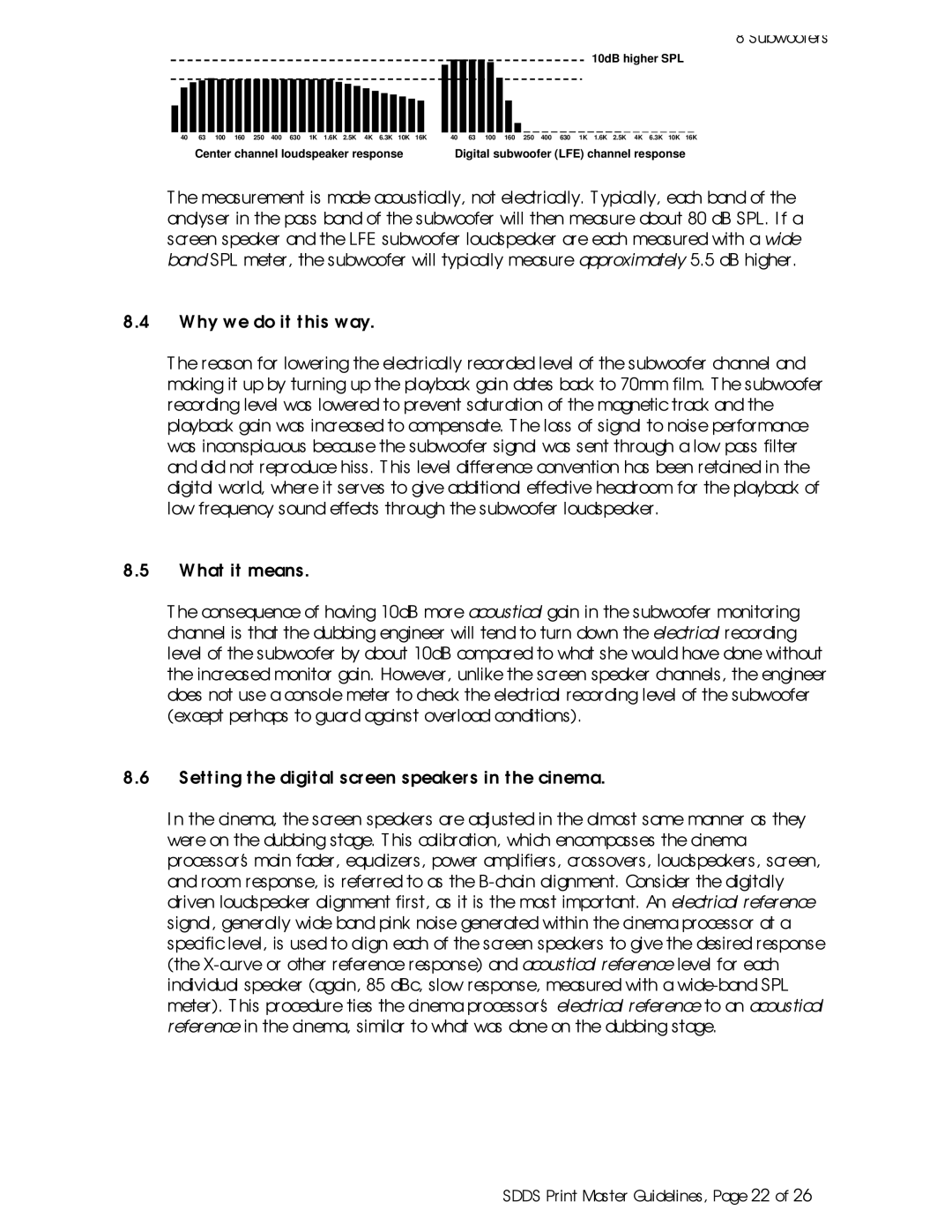
8 Subwoofers
40 | 63 | 100 | 160 | 250 | 400 | 630 | 1K | 1.6K | 2.5K | 4K | 6.3K | 10K | 16K | 40 | 63 | 100 | 160 | 250 | 400 | 630 | 1K |
10dB higher SPL
1.6K 2.5K 4K 6.3K 10K 16K
Center channel loudspeaker response | Digital subwoofer (LFE) channel response |
T he measurement is made acoustically, not electrically. T ypically, each band of the analyser in the pass band of the subwoofer will then measure about 80 dB SPL. I f a screen speaker and the LFE subwoofer loudspeaker are each measured with a wide band SPL meter, the subwoofer will typically measure approximately 5.5 dB higher.
8.4Why we do it this way.
T he reason for lowering the electrically recorded level of the subwoofer channel and making it up by turning up the playback gain dates back to 70mm film. T he subwoofer recording level was lowered to prevent saturation of the magnetic track and the playback gain was increased to compensate. T he loss of signal to noise performance was inconspicuous because the subwoofer signal was sent through a low pass filter and did not reproduce hiss. T his level difference convention has been retained in the digital world, where it serves to give additional effective headroom for the playback of low frequency sound effects through the subwoofer loudspeaker.
8.5What it means.
T he consequence of having 10dB more acoustical gain in the subwoofer monitoring channel is that the dubbing engineer will tend to turn down the electrical recording level of the subwoofer by about 10dB compared to what she would have done without the increased monitor gain. However, unlike the screen speaker channels, the engineer does not use a console meter to check the electrical recording level of the subwoofer (except perhaps to guard against overload conditions).
8.6Setting the digital screen speakers in the cinema.
I n the cinema, the screen speakers are adjusted in the almost same manner as they were on the dubbing stage. T his calibration, which encompasses the cinema processor’s main fader, equalizers, power amplifiers, crossovers, loudspeakers, screen, and room response, is referred to as the
